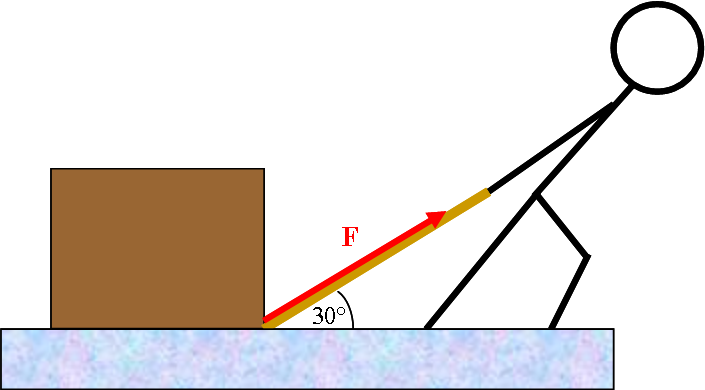Part A

A person pushes a box of mass 15 kg along a smooth floor by applying a force F at an angle of 30° below the horizontal.. The box accelerates horizontally at a rate of 2.0 m/s2. What is the magnitude of F?
System: Box as point particle subject to external influences from the person (applied force) the earth (gravity) and the floor (normal force).
Model: Point Particle Dynamics.
Approach: Before writing Newton's 2nd Law for the x direction, we break the applied force F into x- and y-components:
This implies:
\begin
[ \sum F_
= F\cos\theta = ma_
] \end
Solving for F:
\begin
[ F = \frac{ma_{x}}
= \mbox
]\end
Part B

A person pulls a box of mass 15 kg along a smooth floor by applying a force F at an angle of 30° above the horizontal.. The box accelerates horizontally at a rate of 2.0 m/s2. What is the magnitude of F?
System: Box as point particle subject to external influences from the person (applied force) the earth (gravity) and the floor (normal force).
Model: Point Particle Dynamics.
Approach: Before writing Newton's 2nd Law for the x direction, we break the applied force F into x- and y-components:
This implies:
\begin
[ \sum F_
= F\cos\theta = ma_
] \end
Solving for F:
\begin
[ F = \frac{ma_{x}}
= \mbox
]\end